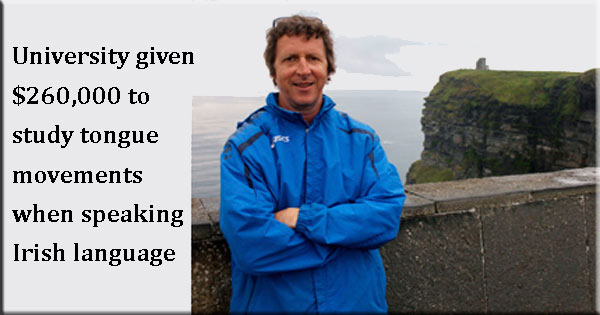Irish tongues and their movements are the subject of a $260,000 study by linguistic experts at the Santa Cruz University in California.
As few as 3% of people in Ireland use the language on a regular basis, and experts fear that without proper documentation and recordings, it could die out completely.

Jaye Padgett in Ireland. Photo from news.ucsc.edu
Now, the University of Santa Cruz have been issued a grant of $261,255 from the National Science Foundation for the project: Collaborative Research: An Ultrasound Investigation of Irish Palatalization.
To put simply, the study is on the language, and more specifically, the movements of the tongue.
One interesting trait of Irish, is that every consonant sound has two variations, one which requires the tongue to be pushed forward in the mouth, and one with it pushed back.
These fine details have been naturally adopted by Irish speaking people for years, with their own hearing guiding them to intuitive pronunciations.
However, now in the 21st century, the technology is available to accurately capture the exact movements the tongue makes in order to make these different sounds.
Jaye Padgett, the Professor of Linguistics at the University, explained: “Although we all have tongues, we are surprisingly bad at knowing precisely what they’re doing or conveying that to others.
“Using a portable ultrasound machine allows us to non-invasively capture video of the tongue’s surface while it moves during speech. Analysis of this ultrasound data will also allow us to answer more general questions about speech production.”
Máire Ní Chiosán of University College Dublin is a native Irish speaker and will collaborate on the study.
The grant will enable the researchers to travel to Ireland and record native Irish speakers from all corners of the country, in order to learn about the subtle differences in regional dialect.
These will be studied by students at Santa Cruz and Yale, with the aim of producing an accurate guide to the tongue movements used to speak Irish fluently. The results will ensure that the language is never lost.
In time, it is hoped that the research can be used to produce tutorials for people around the world who want to learn how to speak Irish.